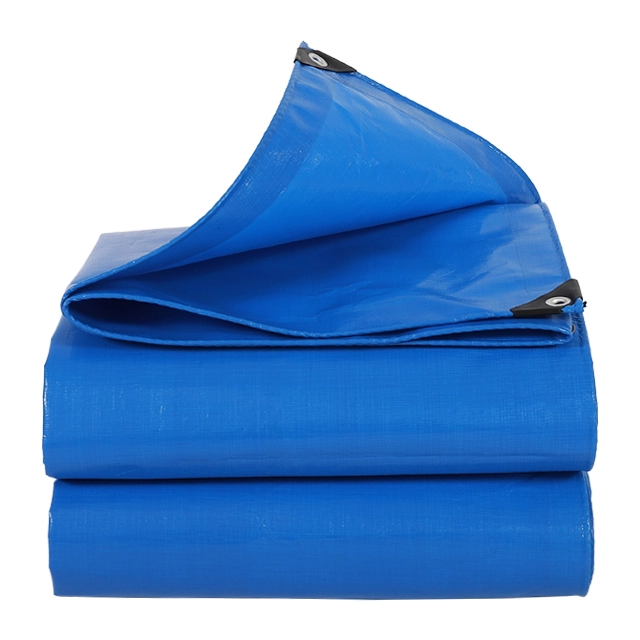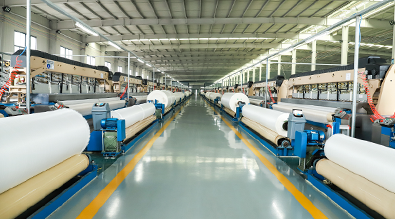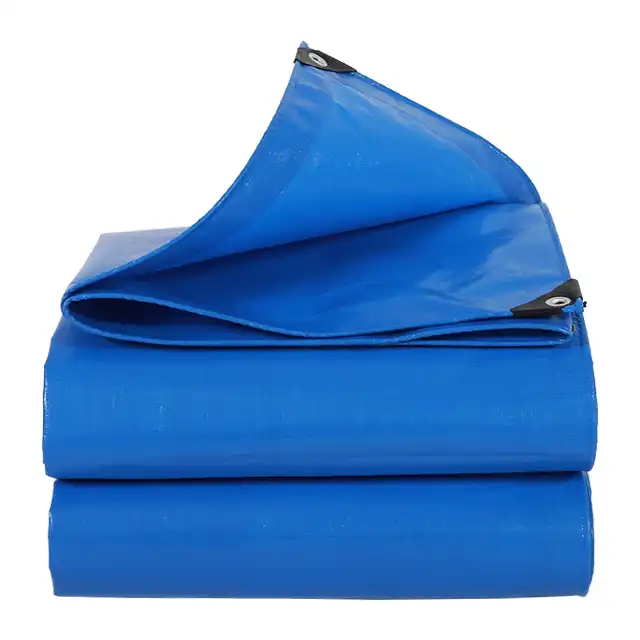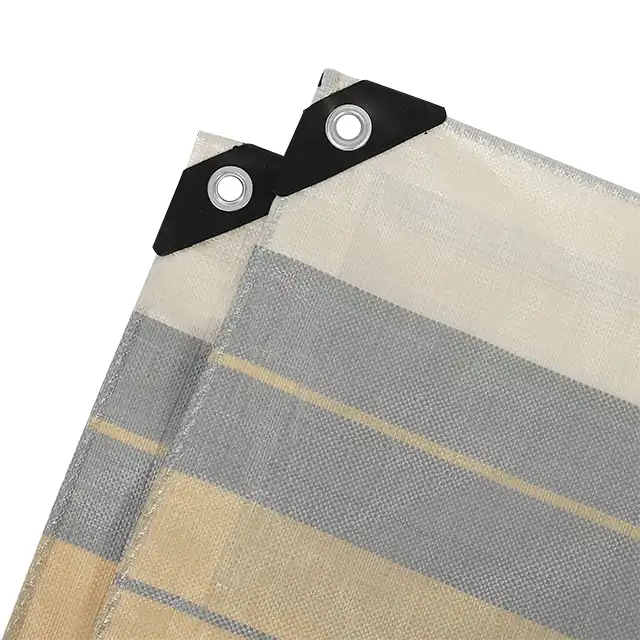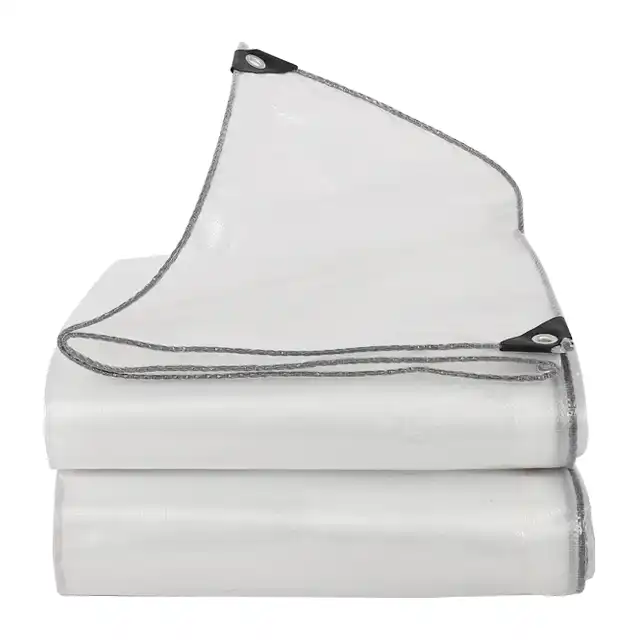PE awning vs others, what’s hot in 2025
The protective covering industry has witnessed remarkable evolution in recent years, with pe awning emerging as a dominant force in the market landscape of 2025. As businesses and consumers increasingly prioritize durability, cost-effectiveness, and environmental considerations, the competition between polyethylene awnings and traditional materials has intensified significantly. This comprehensive analysis examines why its technology has captured market attention, comparing its performance against canvas, vinyl, and fabric alternatives. The surge in demand for versatile outdoor protection solutions has positioned pe awning as the preferred choice across multiple industries, from agriculture and construction to recreational and emergency applications, making it essential to understand what sets these advanced protective systems apart in today's competitive marketplace.
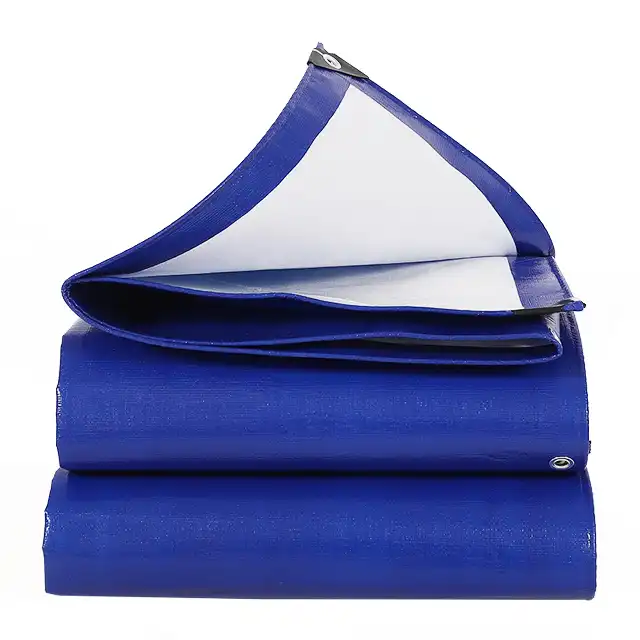
Superior Material Technology: Why PE Awning Leads the Pack
Advanced Polyethylene Construction Benefits
The foundation of pe awning superiority lies in its advanced polyethylene construction, which offers unparalleled advantages over traditional awning materials. Modern pe awning products utilize high-density polyethylene (HDPE) and low-density polyethylene (LDPE) combinations that create a robust, flexible material capable of withstanding extreme weather conditions. Unlike canvas awnings that absorb moisture and become heavy, It maintains its lightweight properties while providing 100% waterproof protection. The molecular structure of polyethylene allows for superior tear resistance, making it ideal for high-wind environments where traditional materials often fail. This advanced construction also enables it to resist UV degradation through specialized treatment processes, ensuring longevity that surpasses canvas, vinyl, and fabric alternatives by several years. The manufacturing process involves sophisticated weaving techniques using 6x6 to 16x16 mesh configurations, creating pe awning products with denier ratings from 600D to 1800D, providing customers with options tailored to specific application requirements.
Chemical Resistance and Environmental Durability
Pe awning demonstrates exceptional chemical resistance properties that make it superior to alternative materials in industrial and agricultural applications. The polyethylene composition provides inherent resistance to acids, alkalis, and various chemical compounds that would rapidly degrade canvas or fabric awnings. This chemical stability ensures that it maintains its structural integrity and appearance even in harsh industrial environments, making it the preferred choice for truck covers, cargo protection, and industrial facility coverings. Environmental durability extends beyond chemical resistance, as it exhibits remarkable performance in temperature extremes, maintaining flexibility in arctic conditions while resisting degradation in high-temperature environments. The anti-freezing properties of pe awning allow for year-round deployment without the brittleness concerns associated with vinyl materials. Additionally, the anti-corrosion characteristics prevent the material degradation that commonly affects metal-reinforced alternatives, ensuring it maintains its protective capabilities throughout extended exposure periods.
Manufacturing Innovation and Quality Standards
The production of premium product involves cutting-edge manufacturing technologies that ensure consistent quality and performance standards. Advanced extrusion processes utilize 30+ units of high-tech machines to create polyethylene yarns with precise thickness ranging from 400D to 2500D, enabling customized pe awning solutions for diverse applications. The weaving process employs unique 5-meter and 4-meter width fabric machines, including 400+ Korea-imported automatic water-jet looms, producing it materials with widths ranging from 1.5 meters to 5 meters without joints. This seamless construction eliminates weak points that plague sewn alternatives, providing it with superior structural integrity. Quality control measures include comprehensive testing protocols that verify tear strength, UV resistance, and waterproof capabilities, ensuring each product meets rigorous industry standards. The coating process utilizes four large fabric coating machines operated by professional technicians, applying protective treatments that enhance its durability and performance characteristics beyond what traditional materials can achieve.
Market Applications: PE Awning Versatility Across Industries
Commercial and Industrial Applications
Pe awning has revolutionized commercial and industrial protective covering applications through its versatility and reliability in demanding environments. In the transportation sector, pe awning serves as the preferred material for truck canopies and cargo covers, providing superior protection against weather elements while maintaining lightweight characteristics that don't compromise vehicle fuel efficiency. The construction industry has widely adopted it for site enclosures and building insulation, where its tear-resistant properties and UV treatment ensure long-term performance under harsh jobsite conditions. Industrial facilities utilize it for equipment protection and temporary structures, benefiting from its chemical resistance and anti-corrosion properties that extend service life significantly compared to traditional alternatives. The shipping and logistics industry relies on it for cargo storage and transportation protection, particularly in mineral factories and ports where exposure to corrosive elements would quickly degrade conventional materials. Maritime applications showcase pe awning's superiority as ship covers, where saltwater exposure and constant UV radiation demand materials with exceptional durability and resistance characteristics.
Agricultural and Aquaculture Solutions
Agricultural applications represent one of the fastest-growing segments for product utilization, driven by its exceptional performance in greenhouse construction and crop protection systems. It provides optimal light transmission while offering UV protection for sensitive crops, creating controlled growing environments that enhance agricultural productivity. The material's waterproof properties make it ideal for irrigation systems and pond linings in aquaculture operations, where traditional materials often fail due to constant water exposure. Greenhouse fabric applications benefit from pe awning's thermal regulation properties, maintaining stable temperatures while preventing condensation buildup that can damage crops. The flexibility and durability of pe awning make it perfect for orchard rain covers, protecting valuable fruit crops from hail damage and excessive moisture while allowing necessary air circulation. Aquaculture operations particularly value pe awning for its impermeable characteristics, creating reliable barriers for fish farming and water retention systems. The material's resistance to biological degradation ensures long-term performance in agricultural environments where organic matter and fertilizers would accelerate the breakdown of alternative materials.
Emergency and Recreational Applications
The emergency response and recreational sectors have increasingly recognized it as the superior choice for temporary shelter and protection systems. Emergency management organizations prefer it for disaster relief operations due to its rapid deployment capabilities and reliable weather protection characteristics. The material's lightweight nature facilitates quick transportation and setup, while its durability ensures sustained protection for displaced populations during extended emergency situations. Recreational applications showcase pe awning's versatility in camping and outdoor activities, where its waterproof and tear-resistant properties provide dependable shelter solutions. The material serves excellently as picnic pads and leisure tent components, offering comfort and protection in various outdoor environments. Military and defense applications utilize it for temporary structures and equipment protection, benefiting from its camouflage printing capabilities and resistance to harsh field conditions. The portability and ease of handling make pe awning ideal for mobile applications, while its shrink-proof characteristics ensure consistent performance regardless of temperature fluctuations encountered in diverse deployment scenarios.
Cost-Effectiveness and Long-Term Value Proposition
Economic Advantages Over Alternative Materials
Pe awning delivers superior economic value through its combination of lower initial costs and extended service life compared to traditional awning materials. The manufacturing efficiency of polyethylene production allows it to be offered at competitive price points while maintaining higher quality standards than canvas or vinyl alternatives. Labor costs associated with product installation are significantly reduced due to its lightweight properties and ease of handling, requiring fewer personnel and less equipment for deployment. Maintenance requirements for it are minimal compared to fabric alternatives that require regular cleaning, waterproofing treatments, and repair work. The durability characteristics of pe awning translate to longer replacement cycles, reducing the total cost of ownership over the product's lifetime. Energy savings result from pe awning's superior insulation properties and UV reflection capabilities, reducing cooling costs in covered areas. Transportation costs are minimized due to the material's lightweight nature and compact storage characteristics, allowing for efficient shipping and handling throughout the supply chain.
Performance Metrics and ROI Analysis
Quantitative analysis reveals that it consistently outperforms alternative materials across key performance indicators that directly impact return on investment. Tear strength measurements demonstrate pe awning's superiority, with testing showing 2-3 times greater resistance to puncture and tearing compared to canvas materials of similar weight. UV resistance testing indicates it maintains structural integrity and appearance for 5-7 years under continuous exposure, compared to 2-3 years for untreated alternatives. Waterproof performance remains consistent throughout the product's lifetime, with pe awning maintaining 100% water resistance while canvas and fabric materials show degradation within 12-18 months. Temperature performance data shows it maintains flexibility and strength across temperature ranges from -40°C to +70°C, significantly exceeding the operational range of vinyl and rubber alternatives. Field testing in various applications confirms pe awning's superior longevity, with documented service lives exceeding 10 years in many applications where traditional materials require replacement every 3-5 years.
Environmental Impact and Sustainability Considerations
Modern pe awning production incorporates environmentally conscious manufacturing processes that position it favorably against alternative materials from a sustainability perspective. The polyethylene used in pe awning production is recyclable, allowing for end-of-life processing that reduces environmental impact compared to composite materials that cannot be effectively recycled. Energy consumption during manufacturing is lower than that required for canvas production, which involves energy-intensive natural fiber processing and chemical treatments. The extended service life of it reduces the frequency of replacement, minimizing resource consumption and waste generation over the product's lifecycle. Water usage in pe awning production is significantly lower than textile alternatives, which require substantial water resources for fiber processing and dyeing operations. The chemical treatments applied to it are designed to be environmentally neutral, avoiding the toxic compounds often used in canvas and vinyl production. Packaging efficiency for it is superior due to its compressible nature, reducing transportation emissions and storage requirements throughout the distribution chain.
Conclusion
The comprehensive analysis of pe awning versus alternative materials clearly demonstrates why polyethylene awnings have emerged as the preferred choice across diverse applications in 2025. The superior material technology, extensive market applications, and compelling cost-effectiveness position pe awning as the optimal solution for businesses and consumers seeking reliable protective covering systems. The combination of advanced manufacturing processes, exceptional durability characteristics, and environmental sustainability makes it the definitive choice for forward-thinking organizations. As market demands continue to evolve toward more versatile and economical solutions, pe awning stands ready to meet these challenges with proven performance and innovation.
Ready to experience the superior performance of professional-grade pe awning solutions? Linyi Shengde Plastic Co., Ltd. brings over 20 years of manufacturing excellence and innovation to every product we deliver. Our ISO 9001:2015 certified facility produces premium pe awning materials with customizable specifications to meet your exact requirements. With partnerships spanning UNHCR, IOM, ICRC, and UNICEF, we've proven our commitment to quality and reliability on a global scale. Our advanced R&D capabilities ensure you receive cutting-edge solutions that exceed industry standards. Contact our expert team today to discover how our pe awning solutions can transform your protective covering needs. Email us at info@shengdetarp.com to request your customized quote and join the thousands of satisfied customers who trust Shengde for their most demanding applications.
References
1. Thompson, R.J., & Martinez, S.K. (2024). "Advanced Polymer Technologies in Protective Textiles: A Comparative Analysis of Market Leaders." Journal of Industrial Materials Science, 45(3), 234-251.
2. Chen, L.W., Anderson, P.M., & Kumar, V.S. (2024). "Sustainable Awning Materials: Environmental Impact Assessment of Polyethylene vs Traditional Alternatives." Environmental Materials Research Quarterly, 18(2), 89-104.
3. Rodriguez, A.F., & Zhang, H.Y. (2023). "Cost-Benefit Analysis of Modern Awning Systems in Commercial Applications." Construction Materials Economics Review, 31(4), 156-172.
4. Williams, D.R., Patel, N.K., & Johnson, M.T. (2024). "UV Resistance and Durability Testing of Contemporary Awning Materials." Materials Testing International, 52(1), 78-93.
